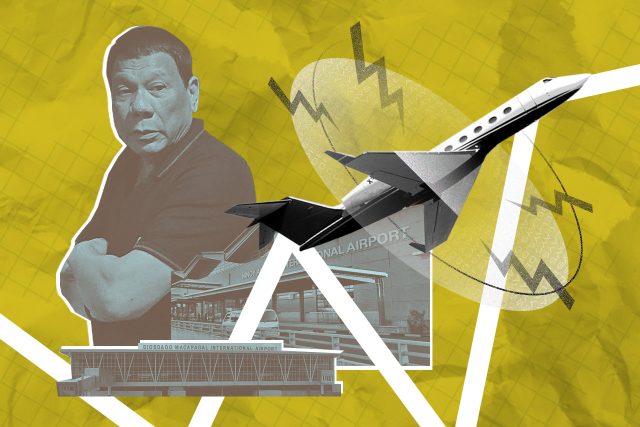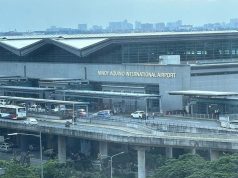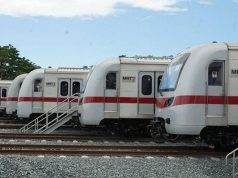
Constant complaints on flight delays at the Ninoy Aquino International Airport for the past three months have prompted the chief executive to conduct a surprise inspection and vow to eliminate such instances.
President Rodrigo Duterte at the 38th Cabinet meeting on June 10, Monday ordered Transportation Secretary Arthur Tugade to immediately start operations at Sangley Point to help decongest NAIA.
The order came after Tugade reported he already initiated the testing of ferries that can operate from Mall of Asia to Sangley within 18-24 minutes, presidential spokesperson Salvador Panelo said.
Tugade considers Sangley Airbase in Cavite as an alternative facility to charter general aviation or domestic flights.
It used to be a U.S. naval facility that was eventually turned over to the Philippine Navy and Air Force in the 1970s.
The administration’s initiative came after NAIA received several complaints from Filipinos about the string of delayed flights and cancellations for the past three months.
Grievances
While delayed flights seem to be a constant at NAIA, recent instances have triggered passengers to air their grievances on social media.
Some of the earlier posts about the topic appear to have been shared in April.
Jusko @CebuPacificAir sobrang perwisyo na dulot mo! Last night, you delayed my flight upto 12midnight tapos eventually, kinancel nyo! Kung may traffic sa NAIA, Di ko gets eh! Bat yung flights ng PAL at AirAsia wala naman natira? Lokohan?
— James Carlo (@JamesAsCarlo) April 22, 2019
Controversial broadcaster Erwin Tulfo in his Facebook post dated April 4 claimed that delayed flights for “up to two hours throughout the country” have become the “new normal,” citing congestion in the airport.
Similar complaints persisted throughout May and the early weeks of June, where dissatisfied passengers claimed that congestion at NAIA has noticeably taken a turn for the worse.
The flight was on time, earlier even. But now it’s delayed due to airport traffic. Sometimes, it really isn’t an airline’s fault. NAIA is just too darn crowded already, plus it only has a single runway. 😫
— ARVI ✨ (@lahirstellar) May 10, 2019
I really think that we should add runways in NAIA. I know that few flights earlier were transferred to Clark due to bad weather but delayed flights are making people unproductive. If I’m not mistaken, we have four terminals but only with two runways?
— Clar (@ClarTanganco) May 21, 2019
Marawi civic leader Samira Gutoc on June 10 — a day before Duterte personally visited NAIA — appealed for a budget airline carrier to provide “another plane for all those on standby” following cancellations.
Paging Cebpac, 3 flights cancelled, need another plane for all those on standby, laguindingan airport pic.twitter.com/dyKziWKIEB
— Samira Gutoc (@SamiraGutoc) June 10, 2019
Possible reasons
Airport officials on April 17, 2019 said that passengers have been experiencing delayed flights on Holy Week (April 14 – 20) due to NAIA’s main taxiway repairs and air traffic congestion.
According to a report by GMA Network’s “Saksi,” the Manila International Airport Authority (MIAA) observed that the number of airplane passengers increased to 10% this year compared to previous years.
On April 20, aviation authorities attributed the frequent delays to a chain reaction that happens “if any of the five local carriers (would) suffer a ‘technical problem’.”
“If any of the five local carriers suffer a ‘technical problem’ or any of their aircraft gets into a minor incident at any of the country’s 30 active provincial airports, the delays would roll over to their next flights, and a chain reaction occurs,” the report said.
When a 6.1-magnitude earthquake rocked Metro Manila on April 22, Clark International Airport halted its operations for 24 hours. Several international and domestic flights were canceled, mostly of Cebu Pacific, Air Asia and Philippine Airlines.
However, the MIAA on April 23 warned that airline companies should not take “advantage” of the earthquake through arbitrary delayed or canceled flights.
By the last week of April, two budget airline carriers canceled several flights because of an “unprecedented level of disruption” to its operations.
The airlines eventually announced that it had canceled more May flights in an attempt to “improve on-time performance and reduce inconvenience to (its) passengers.”
The Department of Transportation on May 20 shared an article on its Twitter account that claimed “real reasons” as to why NAIA has suffered runway congestion since the “peak summer months.”
READ: "Through the peak summer months and especially during the Holy Week, social media sites were flooded with tirades about delayed flights, delayed landings and long waiting times in the taxiways resulting from NAIA’s…#DOTrPH 🇵🇭
READ FULL HERE:https://t.co/rnfmpst84I
— DOTrPH 🇵🇭 (@DOTrPH) May 20, 2019
The article claimed that the most common reasons have been:
- Delays in arrivals of turn-around aircraft
- Airline operational problems
- General aviation
- The weather
“The problem is that NAIA only has two runways to accommodate the entire load of aircraft movements while other airports have a third and fourth runway to serve as back-up,” economist Andrew J. Masigan wrote.
By June 9, flights were delayed and canceled at NAIA anew after a “red lighting alert” was issued due to bad weather.
According to MIAA, it is a safety measure to prevent any untoward incident from happening when bolts of lightning are prevalent in the immediate area.
Duterte’s response
Duterte on June 10 conducted a surprise inspection of NAIA — particularly in Terminal 2 — following several reports of delayed flights.
“President Duterte talked to airline and NAIA officials regarding the cancellations and delays to know whether there are flight diversions and if affected passengers are given incentives to ease their inconvenience,” presidential spokesperson Salvador Panelo said.
“He then talked to the passengers apologizing to them on the inconvenience caused by the disruptions. The president vowed to come up with a remedy within a month,” he added.
By June 11, Duterte ordered Sangley Point in Cavite to “immediately” start its operations in an effort to decongest NAIA of its passengers and aircrafts.
He also hinted at a possible revamp of the country’s main international gateway. — Featured artwork by Interaksyon/Uela Altar-Badayos









